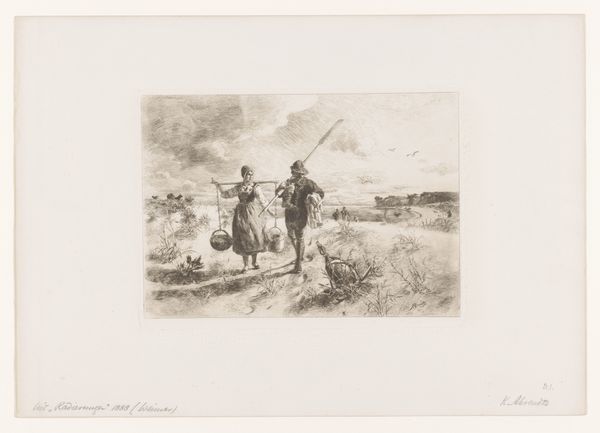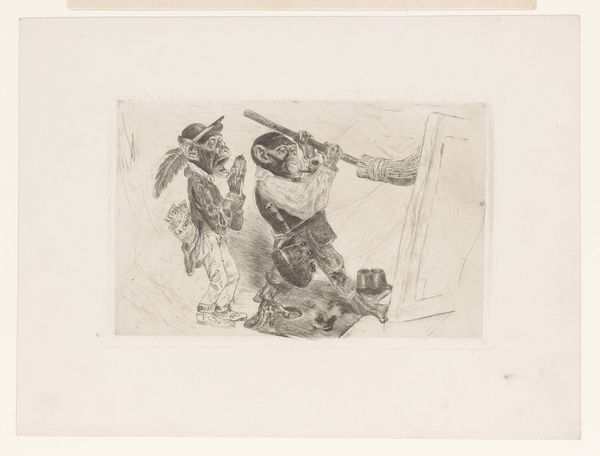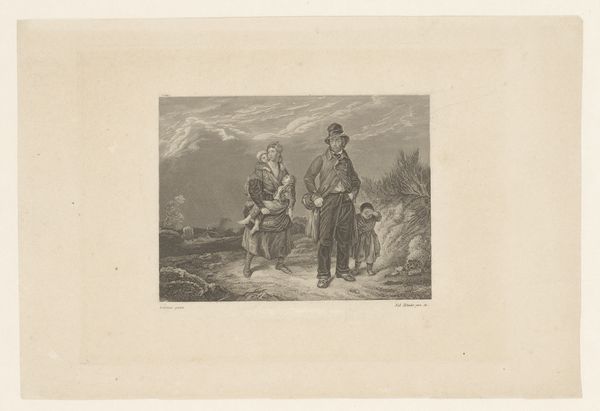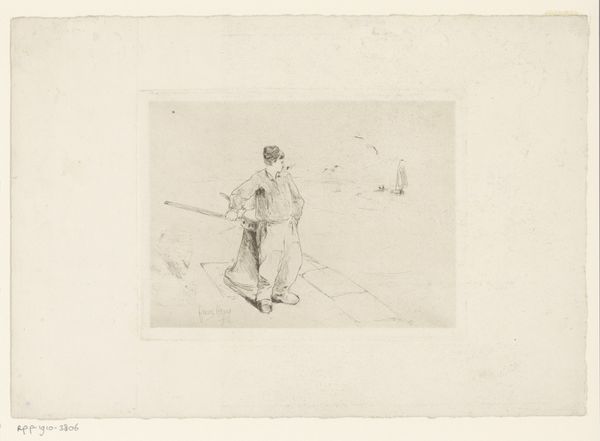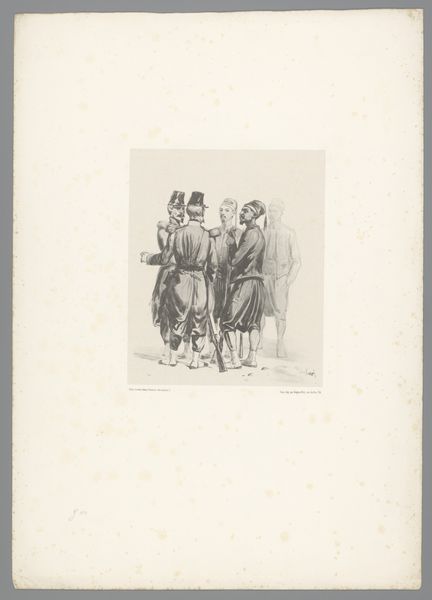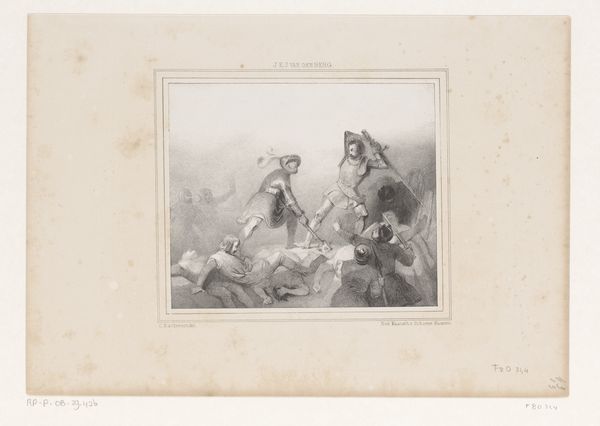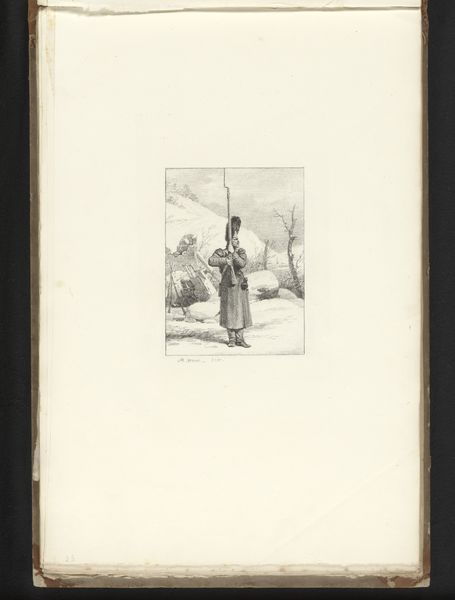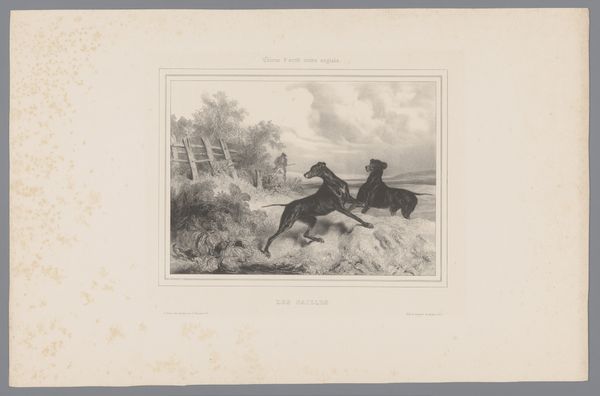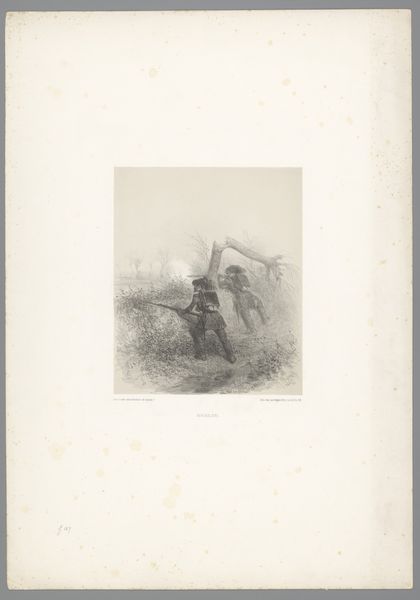
drawing, lithograph, print, paper, pencil
#
portrait
#
pencil drawn
#
drawing
#
narrative-art
#
lithograph
# print
#
pencil sketch
#
charcoal drawing
#
paper
#
pencil drawing
#
pencil
Dimensions: 150 × 235 mm (image); 170 × 238 mm (primary support); 345 × 453 mm (secondary support)
Copyright: Public Domain
Curator: Let’s turn our attention to this intriguing lithograph by Auguste Raffet, titled "Sheet with Stumped Sketch," created in 1839. My initial impression is one of starkness, the contrasting blacks and whites give it a graphic quality. Editor: It's interesting you say that. I immediately see figures burdened by circumstances beyond their control. There is this clear depiction of how society and conflict mark individuals, showing figures possibly from different sides. Curator: The means by which Raffet created this – lithography - are telling. Prints were easily reproduced and circulated. His choice of lithography aligns with his democratized artistic practices making the work accessible. Editor: Absolutely. And that accessibility allowed these images to inform public perception of conflict and individuals, playing into political ideologies prevalent at that time. The very act of depicting them carries an agenda, doesn't it? Curator: It makes me consider the conditions of the workshop, the availability of materials like the quality of the paper or the grade of pencils. How these might have impacted Raffet's mark-making. Editor: Looking closer, the man with the turban looks almost pained. The weight of his belongings combined with that facial expression, shows suffering experienced by those caught between political agendas. How might they view the very labor that produced this lithograph portraying them? Curator: You’re raising the complex matter of artistic labor and who benefits. From an economic point of view, prints like this sustained artists. We should examine the production chain too, not only to honor the under recognized workers of printmaking. Editor: Precisely, because the materials themselves are connected to power. Consider how access to materials, labor and even representation, reflects social power structures. Who has access? Who is left out? Curator: It’s a testament to Raffet’s skill that the print is so emotive. The quick strokes, the shadowing gives a strong sense of the immediate context. It encapsulates human determination against material adversity. Editor: The print asks us to consider not just the surface representation, but how political factors mold even the most intimate individual experiences, which resonate profoundly even today.
Comments
No comments
Be the first to comment and join the conversation on the ultimate creative platform.


